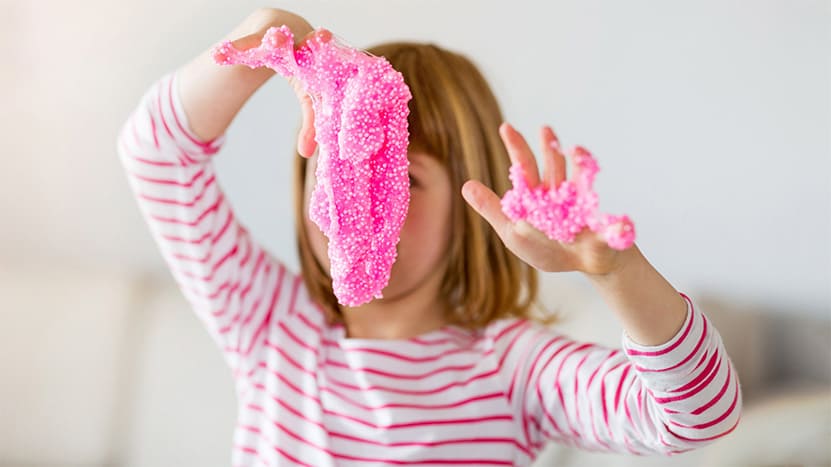Welcome to the weird world of innovative branding, where the absurd can make a lot of money!
Branding should be fun. It doesn’t have to be routine or a dreaded website update. Give yourself permission to experiment and rethink everything: whether it’s packaging in the form of a honey jar made of beeswax or a giant snake squeezing a bus (as shrinkwrap) to advertise the zoo. Take a look at these 5 brands. Are they ridiculous or ingenious? Would you have predicted their success? See how innovative branding, even with the absurd, can create memorability and profits and build a perception.
1. Silly Putty.
A failed effort to create synthetic rubber during WW2 became a cult-classic toy for kids and adults. What you may not realize is that the strange substance wasn’t well known until an advertising consultant ended up buying a batch and selling it in plastic eggs for Easter in 1950. Even then, the brand didn’t gain momentum until a write up in the New Yorker. One year later, millions of the little eggs were sold.
But how did this happen? Why did it work? The name says it all: it was fun. And a massive target audience needed something silly as a distraction from another war. A product that could be marketed as a toy for both children and adults was just the key.
Sometimes, the consumer need that an innovative brand satisfies isn’t complex at all. Fun can come in small unexpected packages.
2. Hypercolor Shirts.
Clothing that changes color with body heat? We had one, too, even though we didn’t realize we needed it. Although this product took off like a rocket, it didn’t survive, in part due to over-availability. As a branding touchpoint, the excess availability in the purchasing phase meant, of course, there was no scarcity. Remember: scarcity helps create value. According to another source, the product finally collapsed under the weight of a class action lawsuit when hypercolor underwear simply didn’t work, and the dye used in the fabric broke down and… transferred to the wearer’s skin. Perhaps rapid expansion skipped product testing in a couple of areas, because we also remember the mushy weird purple-grey color that our shirts eventually developed.
Novelty is a fantastic way to appeal to target audiences, with resounding success. But let Hypercolor remind us that sometimes, the faster the flame, the quicker the burnout.
3. Ch-ch-ch-chia!
Who doesn’t know about small clay animals that grow… chia sprouts instead of hair?
This brand fared much better than our previous example. Despite their novelty and corny jingle that still lives with us, chia pets have maintained a steady stream of success for 30 years, selling 500,000 units annually. Although described as a “lucky accident,” the Chia Pet found a target audience, and it wasn’t people who wanted “just a small clay object that would sprout seeds.” It’s a target audience that appreciated (and still does) humor in the form of caricature. That’s it: the innovative branding of humor… for a windowsill. Unlike hypercolor t-shirts, Chia Pets remain popular at the holidays, particularly as gag gifts, creating seasonal scarcity much like the pumpkin spice latte by Starbucks. Although sticking with the original premise, these little rascals now take on the image of celebrities, cartoon characters… even emoji.
4. Snuggies.
Is it a blanket or a clothing? Maybe that matters mostly for tax purposes, but the Snuggie also hits our list. Why was it so successful when it wasn’t the first blanket with sleeves? One key difference may have been the way the company took humor on the chin and joined in the parody. Innovative branding sometimes requires listening to your target audience and their perception: blankets with sleeves ARE a bit absurd, but who cares if they’re fun and comfortable?
Branding is always about perception. Sometimes, innovative branding rolls with the punches, and capitalizes on the one held by a target audience instead of fighting it.
5. Tamagotchis.
Toys that die because they aren’t fed or watered, or because a polar bear attacked them while they napped. Remember Tamagotchis? These small digital devices needed constant upkeep in order to keep them “alive.” This brand found a target audience by solving a problem that kids had: a need to be needed. It provided control to a population that otherwise had little control over their own middle-school lives, while also partly satisfying the classic child fantasy of a teddy bear coming to life. There’s good news for the diehards (we couldn’t resist the pun)… there’s a 20th anniversary release scheduled in Japan this year.
Takeaway:
“Random” isn’t a strategy in the weird wonderful world of innovative branding. It’s about businesses who find unexpected demands and overlooked needs, whether by accident or clever insight, and capitalize on them for fantastic success. Consider Squatty Potty, a business that we’ve highlighted before: they used a rainbow-sherbert-pooping unicorn to sell a product that their target audience didn’t even realize they needed, for outrageous success. Some of these success stories lasted briefly, others continue to thrive, and show us that innovative branding can be, if anything, beyond extraordinary.







